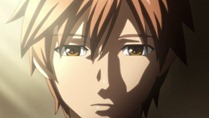 |
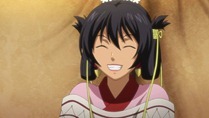 |
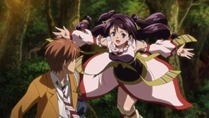 |
We’ve been down this road with Satelight before, and it’s a worrying one.
I mentioned earlier tonight in my Mushibugyou review (sorry Stilts, I liked it) that it was an advantage not to have any experience with a source material when it undergoes significant changes for an anime. I have no such leisure with Arata Kangtari, and as such, I can’t help but be acutely aware of just how different the course of the anime looks – at least for now – from Yuu Watase’s manga.
I’m a pretty big fan of that manga, from the author of Fushigi Yugi and Absolute Boyfriend, among others. It’s not what I’d call profound or a masterpiece, but it’s a damn good yarn – a traditional shounen-style action story from an author with a shoujo background and sensibility. The combination works very well – I’ve always been fond of Watase’s artistic talent if not always her taste, but Arata was the first time her skills as a storyteller impressed me much. Free of the constraints of the shoujo genre and not weighed down with a lifetime trying to conform to those of shounen, she’s come up with a manga that isn’t limited to being either one.
Cut to 2013, and this adaptation. Arata is an ongoing manga and even if it weren’t, it has way too much story to effectively be told in one cour. That’s why the news that this series was going to be one cour was somewhat worrying. Satelight has some track record for such series, prominent among them recently the last series from Arata’s (and Sartelight’s strongest) director, Yasuda Kenji – Ikoku Meiro no Croisee. I adore Ikoku Meiro, and I think it’s one of the most emotionally penetrating anime in years, but it undeniably ended unceremoniously right in the middle of the story. When faced with one-cour series adapting manga with stories too big to fit in them, a studio can either stop in the middle in this fashion, or try to cram everything they can in leading up to an anime-original ending (see Zetman for a recent example). There are downsides to both approaches, but the early evidence is that Yasuda and writer Sekijima Mayori are going to pursue the latter route.
All I can really do as a viewer and blogger, then, is to judge the anime for its ability to tell a coherent and compelling story in the time it’s been allotted. So far the returns are pretty good, as this was a solid premiere from a storytelling standpoint, though already the pacing has caused me a few painful moments. We’re introduced quickly to main character Hinohara Arata (Okamoto Nobuhiko), a first-year high schooler with a doting mother and younger sister. By all accounts Arata seems a bright, attractive (well, this is Watase Yuu) and athletic boy – but there’s a dark secret underlying his family’s intense concern for him. Arata has been the subject of terrible bullying in middle school, especially from Kadowaki Masato (Kimura Ryouhei) – a boy who’s very much an ominous presence in Arata’s high school. Faced with a betrayal and the seemingly impending resumption of his days as a target, Arata tries to will himself out of existence in a fit of self-pity.
Meanwhile, we meet another Arata – this one played by Masuoka Yoshitsugu – who lives in the mythical world of Amawakuni and his problems of his own. The land’s Princess is getting on in years and Arata’s clan has the duty of providing a daughter to replace her – which is an issue, as no daughters have been born to the clan in generations. Arata’s Grandmother impresses on him that it’s his duty to dress as a girl and participate in the ceremony as a girl, since the clan is subject to being eradicated as punishment for not providing any female heirs. This Arata has a strong sense of duty and agrees, at least to try and buy time for a more permanent solution to be found, and heads to the capital under the protection of Kotoha (Takagaki Ayahi) – osananajimi, healer, priestess and all-around mensch. Sadly things go very wrong at the ceremony, as the ones assigned to serve the Princess – the Twelve Shinsho – decide to use the transition to murder the Princess and take power for themselves. After an attempt on her life is nearly successful, forcing her to use magic to effectively suspend herself in time in order to survive, Arata escapes and is blamed for the Princess’ murder by the Shinso point man, Kannagi (Ono Yuuki).
An awful lot happened in the first episode on both sides of the divide, and it leads to the two boys switching places (though those around them see no change) thanks to the magic of the Kando Forest, where the Amawakuni Arata flees after the incident. I think it manages to get the “coherent” part down pretty well in spite of that, though the “compelling” half is more problematic. Most acutely felt for me is the loss of detail on the subject of Hinohara’s bullying – this was a much longer process in the manga, and one of the most harrowingly realistic portrayals of bullying I’ve seen in any format. I had some concerns with the decision to give Hinohara and Arata different seiyuu – in my mind I always pictured them as having the same voice as well as the same face – but in hindsight I think it was a smart move. Both Masuaka and Okamoto are quite good, and it helps to highlight the difference between the two, which go a lot deeper than just hair color. Where Hinohara is plagued with self-doubt and even self-loathing, Arata is a rather genki and game-for-anything sort of lad – and each is going to get a taste of how the other half lives.
In premise, we’re pretty much in line with manga canon at the moment – we just got there a whole lot faster. And it’s a very good premise, with a lot of potential drama and comedy as Arata adjusts to high school in modern Tokyo and Hinohara to life on the run in a land of magic and monsters where the powers that be want him dead. Fortunately for him he’s one of the chosen ones who can wield a Hayagami, the magical weapons about which we’re going to learn a whole lot more, and very soon. His is the flashier story, but Arata’s tale in modern Tokyo is a very good one as well – and one of the very interesting questions we’re facing is just how much screen time it will get when screen time is going to be so limited. I have a good deal of trust in Kanji Yasuda, though the challenge facing him in fitting this story into one cour is a formidable one indeed.
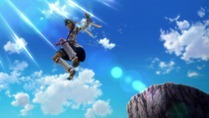 |
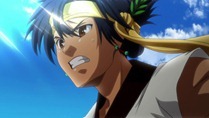 |
 |
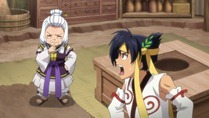 |
 |
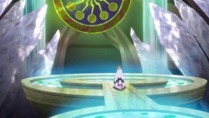 |
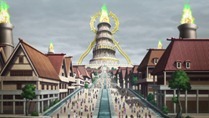 |
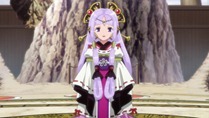 |
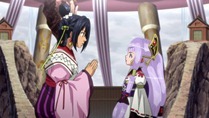 |
 |
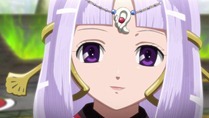 |
 |
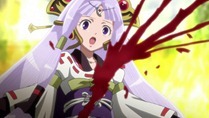 |
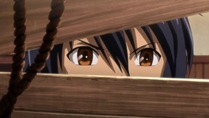 |
 |
 |
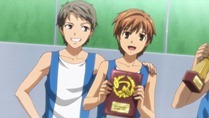 |
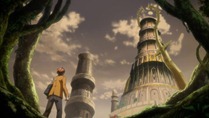 |
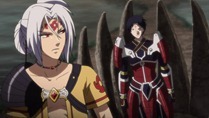 |
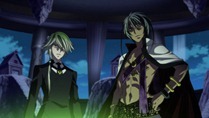 |
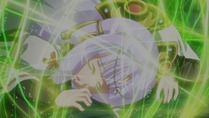 |
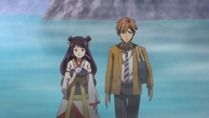 |
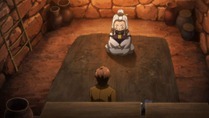 |
 |
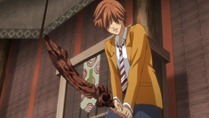 |
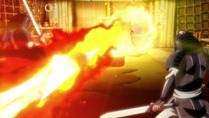 |
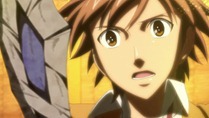 |
ED: “The Misfit Go” by OLDCODEX
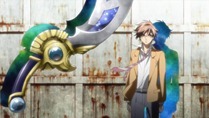 |
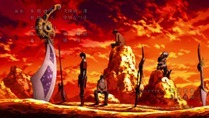 |
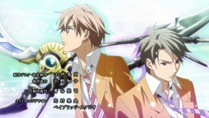 |


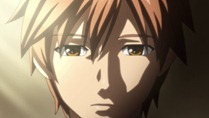
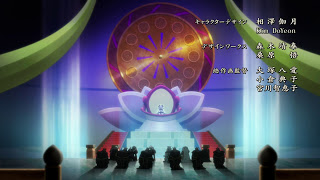
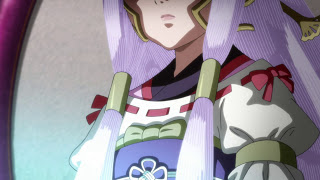
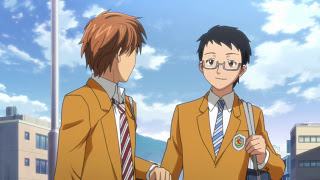
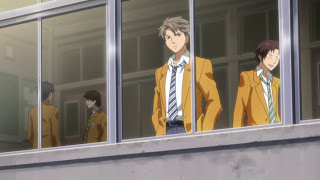
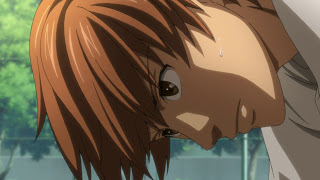
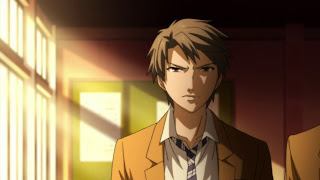



Amndn
April 9, 2013 at 4:24 pmIntriguing. Lots of Yuu Watase's familiar signature style, setting and character designs.
Wonder why out of the twelve warriors, only two of them are prominent in the ED.
Is the source material substantial? 12 episodes seem a bit short to me too.
windaerie
April 9, 2013 at 5:20 pmI've seen Ayashi no Ceres, Fushigi Yuugi, and the live action of Absolute Boyfriend without having read any of the mangas, and I thought the shows were all enjoyable. Most of her stuff does seem more suited to a longer run though, due to the character developments and dramatic emotional moments, so hopefully this being a 1cour show will still allow us to love the characters. This show was completely off my list of spring 2013 things to watch, but your review makes me want to take a look! 🙂 or perhaps I should take a look at the manga instead?
Thanks for the review, Enzo!
admin
April 10, 2013 at 12:19 amI always say "take a look", and I think the premiere is really quite good. I think they're going to have ti change so much to fit it into 12 eps that even if it ends up being a case where you should have read the manga, it's not like the manga will be spoiled for you anyway.
ishruns
April 9, 2013 at 5:57 pmI have always had a problem with Satelight, just one of those studios whose work I can never like. Since Manglobe made Mashiro iro Symphony, it is now the only major studio whose works I have always either ignored or dropped eventually.
But with Arata Kangatari I feel that streak is going to end. I liked the initial episode, albeit reminding me of the Vision of Escaflowne with a bishie lead. There wasn't much subtlety from it so I guess a lot of info on the characters personality was left out and the plot was given the fore.
Still it seems like a bishie filled shounen action series, which will likely avoid random power ups and shouting making you stronger and blonder, but hopefully some of Yuu Watase's more character driven writing survives the axe of satelight.
leongsh
April 9, 2013 at 9:50 pmOne cour… This will not end well. Hopefully it will end at a natural stopping point and not too abrupt. If the anime is any good, fans will be left gnashing their teeth due to an incomplete adaptation. If it isn't, it will be panned badly and the decision to do an anime adaptation would be lamented.
Gary Cochran
April 10, 2013 at 12:40 amI really liked this 1st episode. I have not read the manga to be spoiled on what might or might not be there. Looking forward to seeing how this series develops.
I don't mind long source material as a 1 cour series as long as they come back with more seasons eventually to finish telling the whole story (like Index or Railgun).